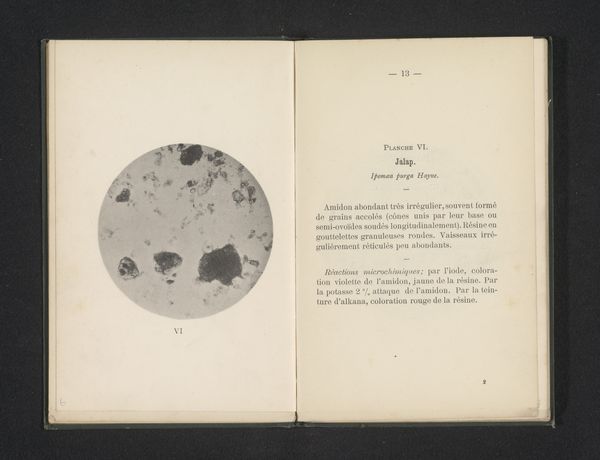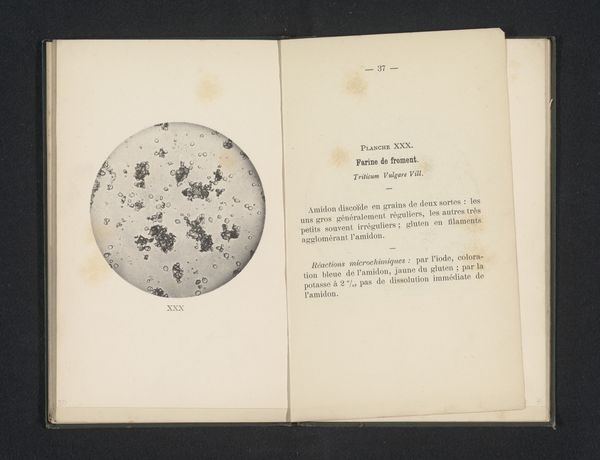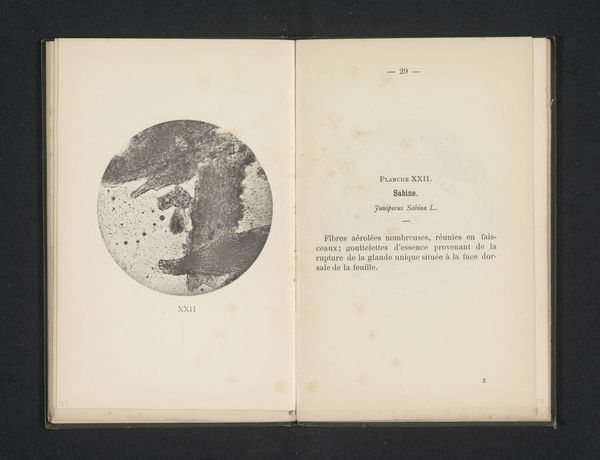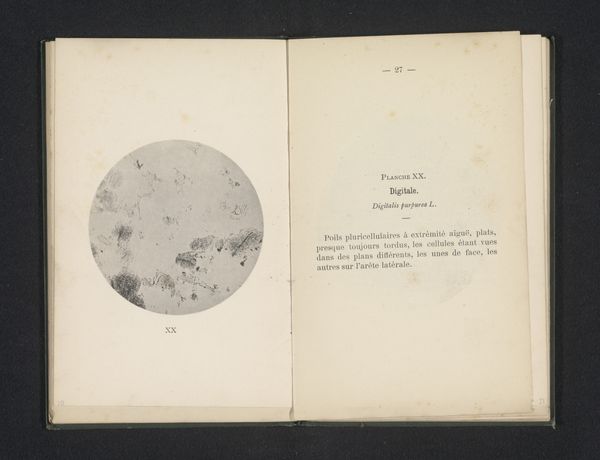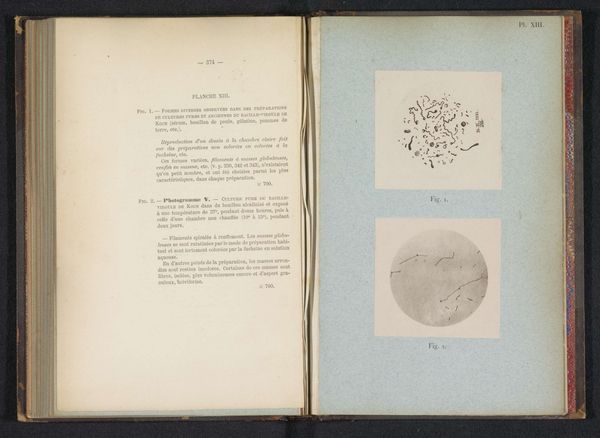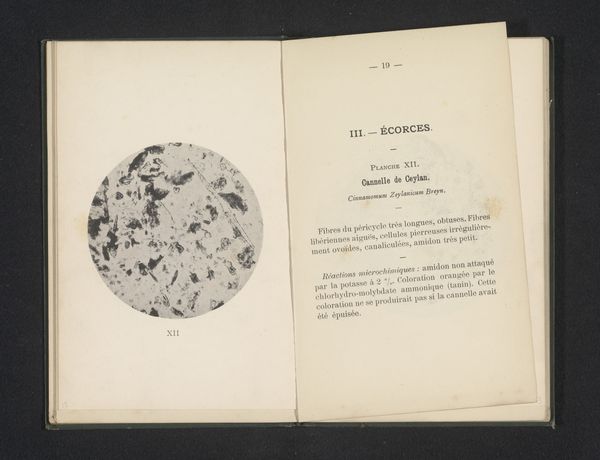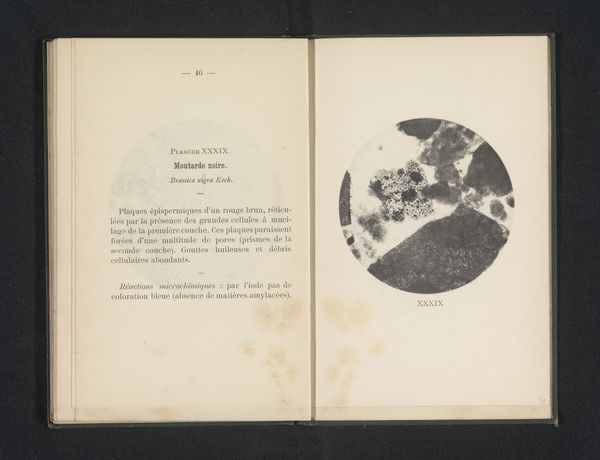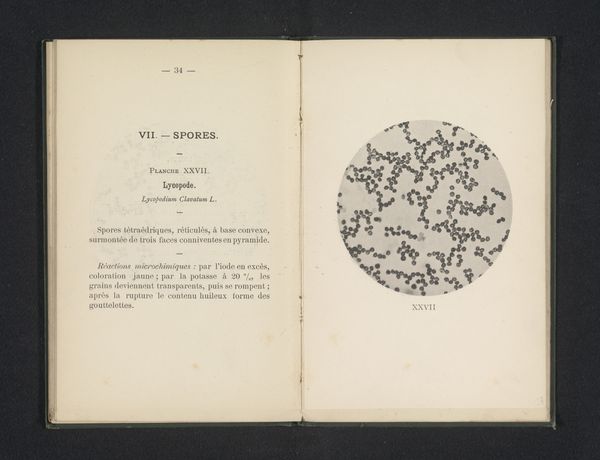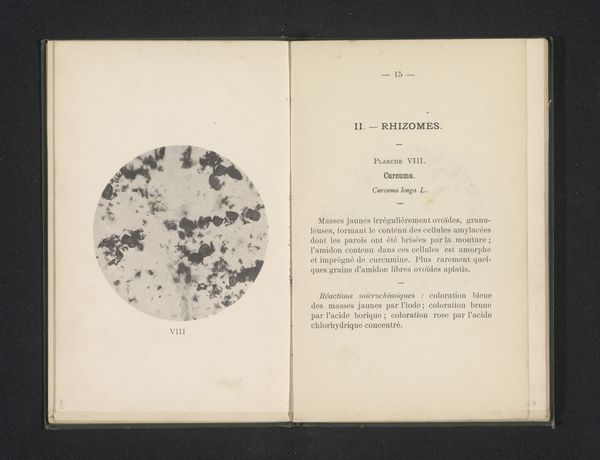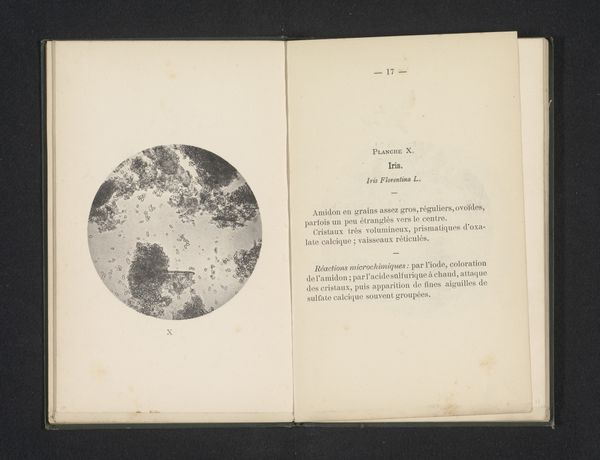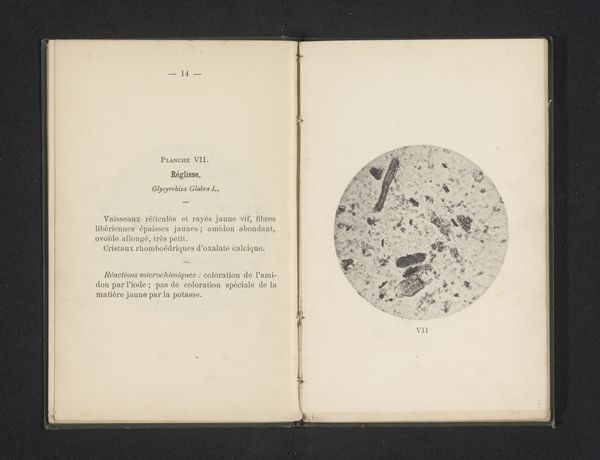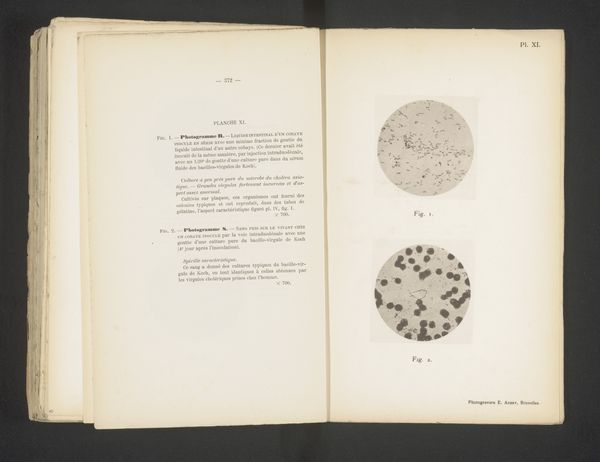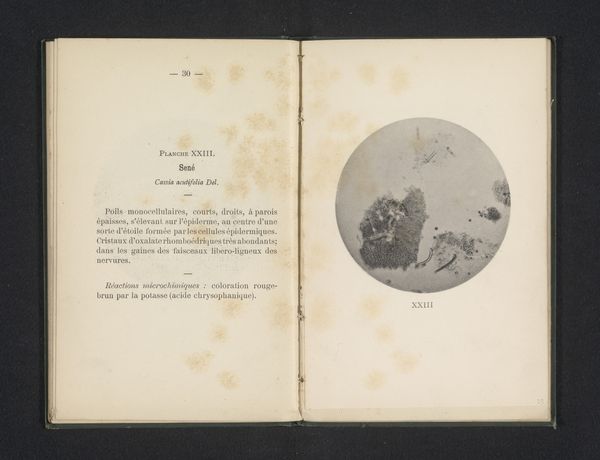
print, photography
# print
#
photography
#
academic-art
Dimensions: height 81 mm, width 81 mm
Copyright: Rijks Museum: Open Domain
Curator: This photogravure is entitled "Microscopische weergave van braaknoten," depicting a microscopic view of Strychnos seeds, also known as nux vomica. L\u00e9on Herlant created this academic print some time before 1896. Editor: Hmm...my first impression? Grainy. It feels less like art and more like peering into a particularly dull petri dish, like forgotten breakfast oats left way too long. Curator: That initial feeling is worth exploring. Nux vomica isn't just breakfast, though it is part of the plant kingdom. Historically, it has powerful associations. This is strychnine, a highly toxic substance used in poison and, controversially, in medicine. Herlant presents science, yet the subject carries a considerable social weight relating to medicine, crime, and even colonialism. Editor: Crime, you say? Ooh, now you’ve got my attention! So, this seemingly innocuous image contains hidden menace? Like a tiny killer hiding in plain sight? It really makes me question the intent of capturing something deadly and presenting it in an academic setting. Was it curiosity? A warning? A dark fascination? Curator: The context of the late 19th century is key. Scientific advancements were both celebrated and feared. Photography offered unprecedented access to the unseen, be it the beautiful or the potentially dangerous. Academic art of this era often straddled those boundaries. Think also about how certain medicines can become poisons and consider how these seeds connect to both the cure and the poison. Editor: The print *is* beautiful, now that I really look at it, in a morbid kind of way. And those little granules! It's funny how something so aesthetically pleasing can have such dark associations. There’s also a vulnerability in its scale and presentation. Encased in a book page, displayed under glass… like pinning down an idea or making something ‘scientific.’ Curator: Indeed. The act of microscopic observation, beautifully captured via photography, highlights how science aims to categorize and, to some degree, control the natural world, with varying degrees of success, obviously. The history of nux vomica reflects those tensions poignantly. Editor: Thanks to you, it does, it went from grey oats to a morally grey, fascinating story in just a few minutes! It's a stark reminder that beauty and danger, medicine and poison, can coexist within the same tiny, perfectly rendered frame.
Comments
No comments
Be the first to comment and join the conversation on the ultimate creative platform.
